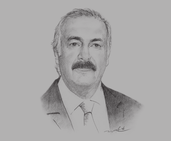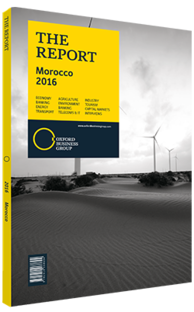Omar Kabbaj, CEO, Interedec: Interview

Interview: Omar Kabbaj
What can be done to increase the attractiveness of Casablanca as a travel destination?
OMAR KABBAJ: Casablanca is the first destination in Morocco for business and cruise tourism. It is also the third tourism destination overall after Marrakech and Agadir. However, despite its mythic name – once featured in a cult movie – strong international competition in urban tourism is forcing large international cities to adopt a strengthened branding strategy that brings together economic, cultural and social actors.
Casablanca has important growth potential, and the current investments in the tourism sector demonstrate this. Structuring projects like the marina, the new city of Anfa – home to Casablanca Finance City – or the restructuring of the port through the $600m Wissal project, will boost the attractiveness of the destination and further its international visibility.
The advanced regionalisation will enrich our destination compared to other cities and products, particularly in terms of sea resorts and cultural offerings, with the Mazagan beach resort in El Jadida or in the development of ecotourism in the city of Benslimane.
Which challenges does the city need to overcome in order to retain tourists?
KABBAJ: First, Casablanca must complete its development programme in terms of infrastructure, including the extension of the international airport; the new cruise terminal; the completion of the congress centre and the international exhibition centre; the largest theatre in Africa; and entertainment and cultural facilities, such as the aquarium and thematic museums. All these achievements must go hand in hand with the current outstanding upgrading of the city centre, along with the improvement of quality of life in terms of mobility, like new tramway lines, as well as car parks and the rehabilitation of parks.
The average sq metre of green space per person in Casablanca is much lower than in any other city in Morocco. Therefore, we need to reach the target of planting 1m trees. Even though Casablanca is the third travel destination in Morocco, the city ranks second in terms of average spending per tourist. This competitive advantage must be strengthened, and operators – with the help of local government – should target businessmen and their families.
What trends should the next tourism strategy take into account?
KABBAJ: Vision 2010 included a target of 8000 beds for seaside tourism in order to achieve the goal of 10m tourists by the end of the decade. Although Morocco once reached 10m tourists, only 3000 beds were available for seaside tourism. This is due to the fact that Moroccans living abroad have changed their habits. While first-generation Moroccans used to come back to the country to spend time with their family in the countryside, second and third generations spend just a few days in the countryside and then book hotel rooms in tourist areas. We have somewhat undervalued this effect and, as a result, the new strategic plan needs to take into account the number of arrivals rather than the number of nights.
The second challenge is to review and modify Plan Azur, the coastal resort develop scheme. Five seaside facilities were planned in the South but only one is operational. We need to be more realistic in the future. Two facilities are sufficient because we face human and financial resource constraints. While we wanted to develop 600 ha of facilities, international investors were cautious. They developed around 2 ha in the first phase, and then realised that the business was not successful enough.
Nonetheless, there are an estimated 5.2m Russian tourists out there looking for a new country to holiday in because they no longer want to go to Turkey, Egypt or Tunisia. There is a demand that can be met if we stop wasting time and develop step by step.
You have reached the limit of premium articles you can view for free.
Choose from the options below to purchase print or digital editions of our Reports. You can also purchase a website subscription giving you unlimited access to all of our Reports online for 12 months.
If you have already purchased this Report or have a website subscription, please login to continue.

